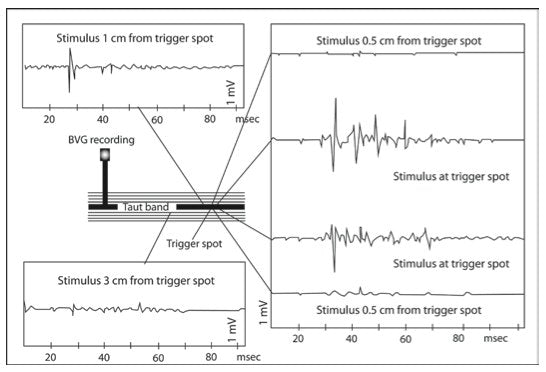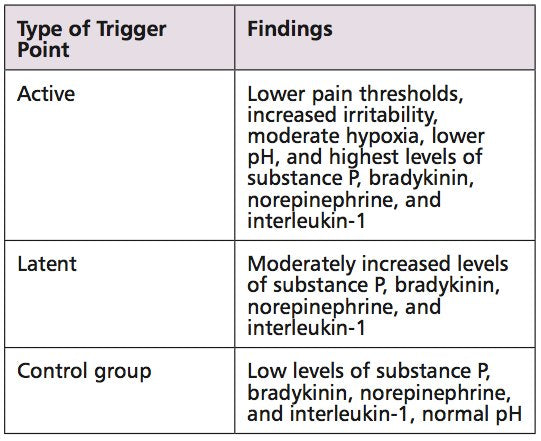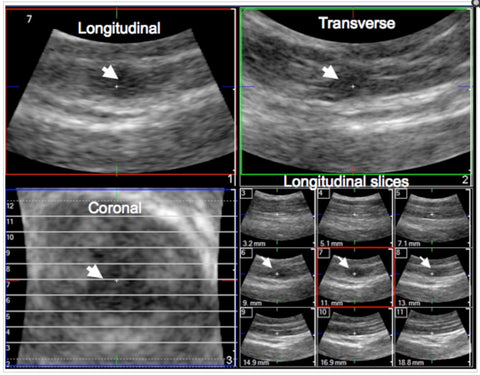Trigger Point Therapy - Do Trigger Points Really Exist?
The way in which trigger point therapy has become established in mainstream healthcare in recent years (a trend that's still fast growing), is testament to the calibre and amount of research studies that continue to emerge.
Trigger point therapy has found it's way into some of the leading pain medicine, research and teaching hospitals in the USA (such as John Hopkins University Hospital); as well as the treatment rooms of elite sport and athletics; and more than likely also to you if you're reading this blog!
Whilst we wish we had a dollar for every time someone (sadly wrong and ill-educated) leaves a comment on our FB pages about trigger points not existing, it does begin to get tiresome in 2016. Sure it's fair to argue about and explore the effectiveness of trigger point treatments, and how these are applied.
As mentioned below, there are still some big unanswered questions. But it is simply nonsense to suggest that trigger points are anything but very real.
Research Studies
It's not possible to detail the wide range of research studies in a short blog, but I'll aim here at least to give a brief overview which I hope will be helpful.
The best place to start is back in 1957 when Dr. Janet Travell discovered that trigger points “generate and receive” minute electrical currents. She determined experimentally that trigger point activity could be accurately quantified by measuring these signals with an electromyogram (EMG).
In fact, she even went on to demonstrate that a trigger point could be accurately and reliably located by the same technique.

Local twitch response (LTR) in a rabbit tender spot. LTRs are elicited only when the needle is placed accurately within the trigger spot. (Adapted from: Hong 1996.)
First we need to appreciate that electrical activity in a muscle in its resting state is “silent.”
When a small part of the muscle goes into contracture, as with a trigger point, a tiny, localized spike in electrical activity occurs.
Local Twitch Response (LTR)
These findings have been supported by more recent studies by Hong/Wang (1994) and Audette 2000). Each of these studies found that when needled with a monopolar Teflon-coated EMG needle, trigger points elicited a local twitch response (LTR) which appeared as high-amplitude polyphasic EMG discharges.
And yes, trigger points have been reliably demonstrated by MRIs, with a number of studies showing their efficacy. In fact, only a few key questions still remain unanswered:
-
What is the action of a needle that causes a muscle to contract?
-
Why is the twitch painful?
- Why does the pain go away quickly?
Further Evidence worth noting:
Shah et al. (2003) performed a micro-dialysis experiment, in which two tiny microtubules were inserted (within a hollowed-out acupuncture needle) into the trigger point of the upper trapezius muscle.
Saline solution was pumped through one tubule, while the other aspirated the local tissue fluid exudate; these microtubules were accurately positioned and maneuvered, under ultrasound guidance, from the outer zone of the trigger point toward the center.

Nine subjects were selected for the study; of these, three were said to manifest active trigger points, three latent trigger points, and three no trigger points (control group). To locate the trigger points, the subjects were first manually palpated, and then an algometer (pressure meter) was used to measure the amount of pressure required to elicit symptoms. In each of the nine subjects, the same zone of the upper trapezius was aspirated.
The results have thrown some more light on the internal pathophysiology within trigger points, suggesting localized tissue hypoxia, increased acute inflammatory cascade, and lowered pH (acidosis).
US Imaging
Preliminary findings from half a dozen studies in recent years have shown that Ultrasound offers a convenient, accessible and low-risk approach for identifying MTrPs and for evaluating clinical observations of palpable, painful nodules.
One particular study (Shah, et al, 2010) presented that gray scale echogenicity or color variance imaging can be effectively used to differentiate palpable nodules in soft tissue (either active or latent TP's) from normal myofascial tissue (see image below).

3D imaging of trigger points. A mechanically-scanned 3D probe (3D9-3v) was used for 3D imaging in a subject with a latent trapezius trigger point. The MTrP is clearly identified (arrows) in all three planes as well as in a multi-slice view.
Ref: Novel Applications of Ultrasound Technology to Visualize and Characterize Myofascial Trigger Points and Surrounding Soft Tissue, 2010, Jay P. Shah (et al)
NAT Research
In addition to the above there have been numerous studies in recent years focusing on the effects of particular trigger point techniques on specific musculoskeletal disorders.
We were fortunate to participate with clinical trials of NAT at Addenbrookes Hospital Cambridge, UK (2003), and more recently as part of a multi-national study (2014) into the effects of NAT for Frozen Shoulder.
So if you work with trigger points and know them to work, don't let anyone tell you it's your imagination at work. Trigger points are absolutely real!
About the "Naysayers"
The reason that ever more resource is being allocated to trigger point research is that the evidence to date of the relationship between trigger points and pain is simply overwhelming.
Ten's of thousands of experienced healthcare professionals (MD's and manual therapists) go to work to treat trigger points every day, and these include practitioners working throughout elite sports and athletics, the most results-orientated sector of manual therapy.
We continue to research because we want and need to know more about trigger point formation, affects, and treatment. Because we want to better understand how to treat pain and musculoskeletal dysfunction.
So why the desire from some sections of the medical community to attack the very existence of trigger points? Why are some skeptics so determined to invest time and resources in trying to prove that what exists, doesn't?
I don't have the answers to these questions. What I do know is that whilst many of the most notable skeptics are physical therapists, they clearly aren't the "hands-on" variety. Simply put, no manual therapist with even a moderately developed sense of touch, would argue the case against the existence of trigger points.
Science is lagging behind
Palpation skills are difficult if not impossible to measure, and therefore, as is often the case, research is lagging behind clinical experience and anecdotal evidence.
There's no doubt that there is a lack of empirical evidence to prove that trigger point therapy is effective, and there is huge scope for research into the whole area of trigger points.
The talk (and there's lot's of it) about trigger point therapy is over simplified by some, and over complicated by many. Trigger points aren't likely the cause of all pain, and they're not always simple to treat. On the other hand, they are often very much the cause and incredibly simple to treat!
For the time being, until the lofty world of science works it all out, we'll continue to focus on what we know works, and to encourage the open sharing of ideas and experience.
Find a Trigger Point Professional in your area

Continuing Professional Education
Looking for Massage Therapy CEUs, PT and ATC continuing education, chiropractic CE, or advanced manual therapy training? Explore our evidence-based online courses designed for hands-on professionals.



















